"Together with the customer, we can calculate pretty precisely what the payback period is.”
Antoine van Kasteren
As a machine builder, what do you do in corona time when orders are down and you can’t visit customers? You have worries, but also a sea of time, which, if you choose the easy way out, you could fill with Netflix series binging. Or you could roll up your sleeves, activate the brain cells and look day after day to see where you can still improve the existing machines. And so Xcalibur frame 2.0 was born.
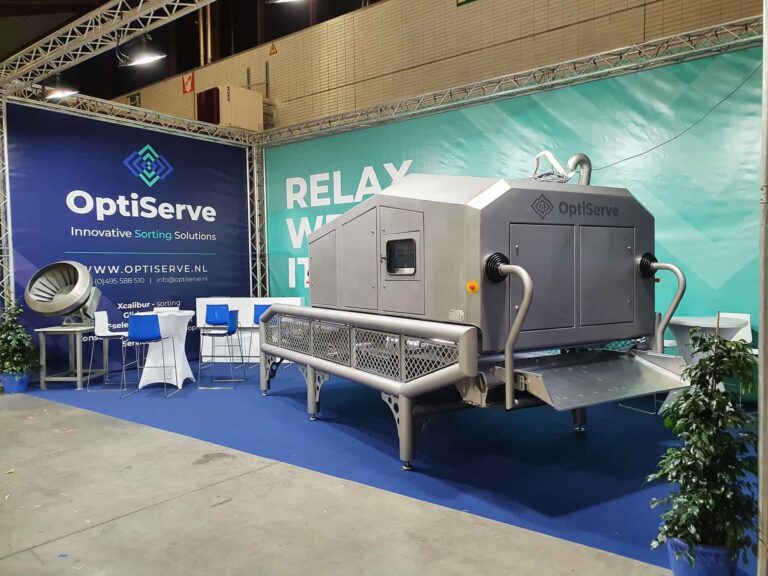
After many years of experience in the sector of sorting machines, Antoine van Kasteren founded OptiServe in 2004 and started refurbishing sorting applications of different brands. In 2009, all that experience, combined with input from Wageningen University & Research, culminated in his own sorting solution: Xcalibur. “In corona time, we had to pony up considerably to stay afloat, but we also took advantage of the freed up time to do some further developments on the Xcalibur, both in terms of mechanics and camera technology and software.”
Unlike the larger players in the market, OptiServe, a company based out of Maarheeze, just south of Eindhoven, fairly centrally located between the German, Dutch and Belgian sales area, does not offer a complete machine park where sometimes a separate machine is designed for each product. “We have one standard model, the Xcalibur, which can be delivered in different widths depending on the customer’s capacity, though. It is a basic platform that in itself can handle many applications for multiple products, but also allows us to develop further according to the specific needs of the customer. And because the basic platform is already versatile, the additional development costs can be kept reasonably well under control,” Antoine explains.

The Xcalibur is used to sort chips and apple segments, for example, but also candy, nuts, grains, seeds, seafood and even non-food. “Meanwhile, the possibilities for sorting beans and mushrooms, among others, have already been explored. Each new product has its own challenge based on shape, because you have to run a different algorithm on it each time. In addition to expanding the range of products that can be read by the machine, further development, which culminated in the Xcalibur 2.0, has focused on integrating the latest 3CCD cameras for better contrast on green and brown and LED lighting for better sorting and lower energy costs. So there’s a bit of sustainability in that as well.”
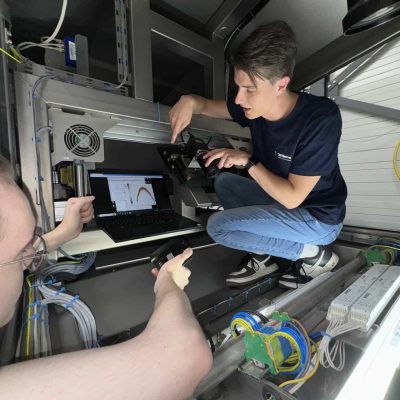
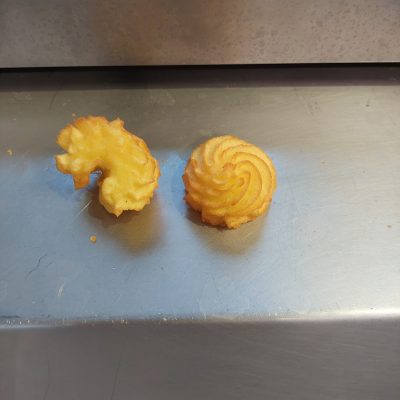
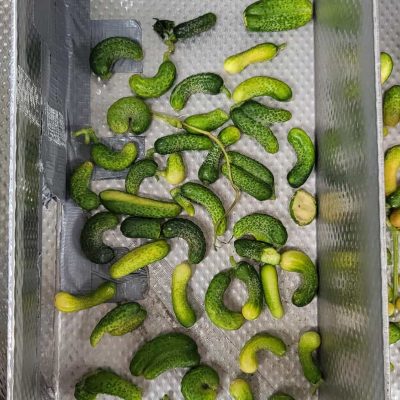
Mechanical improvements have also been made, according to Antoine: the belt change is now easier and faster; the air conditioning indoor unit is equipped with a special protection against corrosion; the discharge valves, blower blade and manifold have been redesigned for more precise and stronger removal of defective objects; the quick-release construction and the belt tracking method for the detection belt have been optimized. “In addition to these and several other mechanical modifications, software advances have also been made, either based on our own research or in response to customer feedback. Moreover, the customer is always entitled to the latest software version of the Xcalibur. Only the labor required to install the latest version is charged. Usually one hour is enough to get the job done,” Antoine explains.
Future efforts will include further developments of the vision system (infrared cameras for internal quality, frame grabbers, etc.), under-exposure of the belt to minimize shadowing on the products and upgrading the software with AI. “All the new developments will be applicable to already existing machines, which increases the life of the Xcalibur,” Antoine said.
As an example of product development, OptiServe’s founder and CEO cites the application of Xcalibur at a customer sorting pickles. “You would think: surely a pickle is just a pickle. But it turns out that there are also pickles that are crooked, grown together or broken in the product stream. These are not allowed in the glass jar and sorting is usually done manually. Now we have developed an algorithm for this product as well, which achieves great results.”
Because the Xcalibur is not just a standard machine, it is not one of the cheapest in the market. “Still, we can keep up with market prices precisely because we are a small company where I myself am still in charge of the big decisions. I adopt a flexible attitude and think along with the prices to make sure that the customer gets a realistic return on his investment. But if you compare our machine to a car, we don’t deliver the €15,000 car. Because those who spend many hours on the track every day need a robust and comfortable car. If the customer informs us what capacity he has, what the incoming product costs and how much the outgoing product brings in, together we can calculate reasonably precisely how many FTEs can be saved and therefore what the payback period is.”
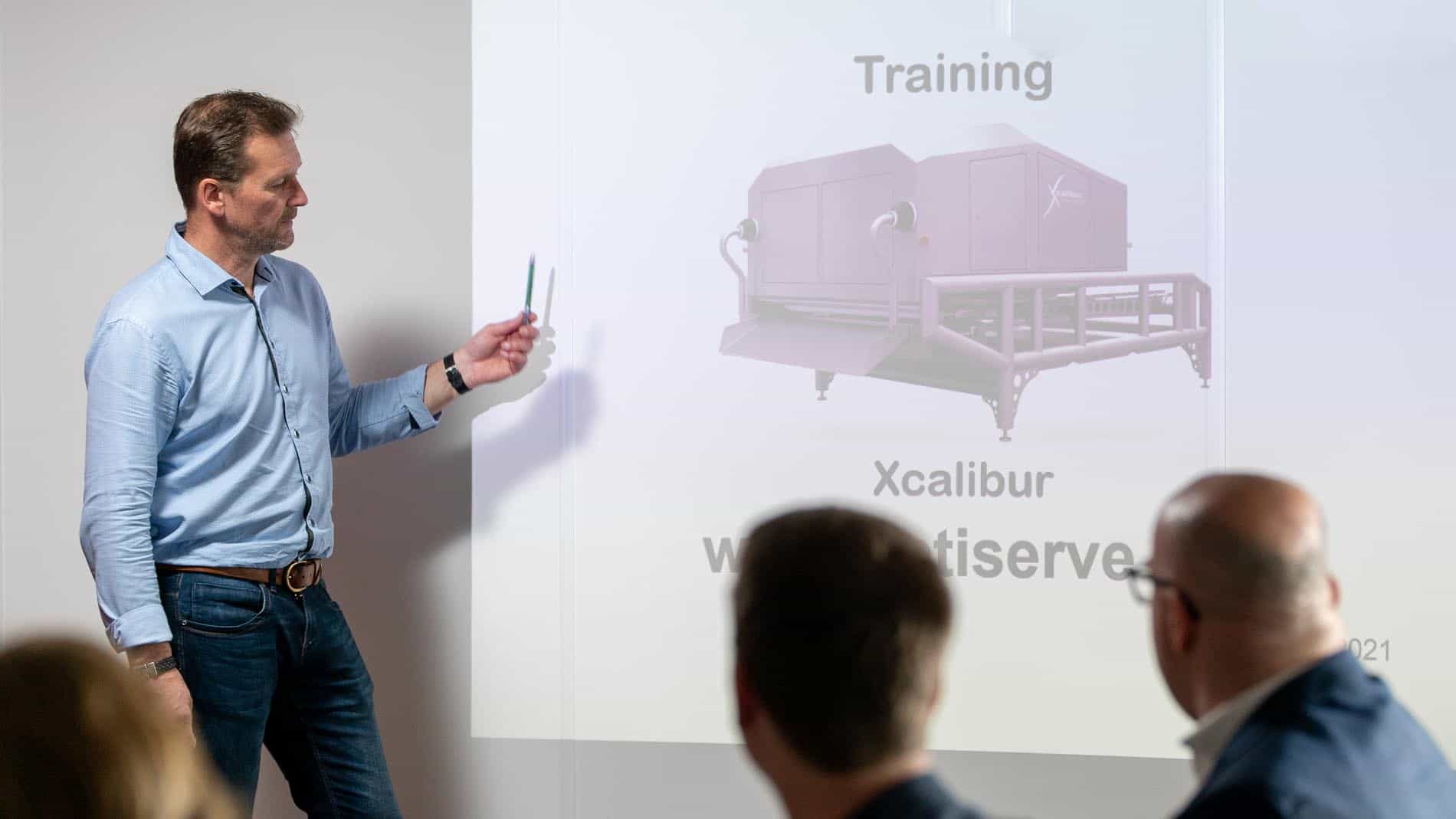
The trend toward automation is in full swing in almost all sectors. Personnel are becoming increasingly expensive, and more importantly, increasingly scarce. “Everyone is running into the challenge of labor availability. Ideally, as a company, you have a line in place where one operator is just supervising. Along those lines, many companies are already putting two sorting applications one after the other, to even eliminate the need for post-checking. For example, we have a small-scale chip processor as a customer that employs one operator. At that customer, both our Xcalibur and our Glide are on the line. The French fries never have to go over the belt twice. Surely that says something about the machine.”
In addition to the universal grader Xcalibur, OptiServe also has an in-house device that cuts the edges of the sorted fries bars: the Glide. “It’s a device with a very simple design, which rarely breaks down and also achieves a high efficiency. If you have 1,000 kilos of waste per day in the form of sorted out fries bars, you can reduce that to eventually 300 kilos in the form of cut cubes or dots. Those then eventually go to the flake line or serve as animal feed. And this machine does cost less than most of its competitors,” Antoine points out.
At the end of November, Antoine will be at Interpom with the Xcalibur 2.0. “We invite all interested parties to come and take a look. There we will explain that the machine is easy to operate and maintain, has a long service life, is reliable and above all does its job very well. And of course we will not fail to point out that as a small player in the market we make it a point of honor to provide excellent service,” concludes Antoine. (PB/PDC)
Copyright ©2024 Optiserve
Leave your details and we will send you the requested information very quickly. Do you have an urgent question? Call us at +31 (0)495 588 510